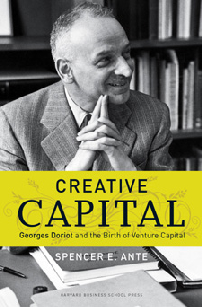Yesterday, a former assistant managing editor of BusinessWeek who ran our overseas bureaus, Robert Dowling, was kind enough to post a comment on the blog about the development of Digital Equipment Corp. I bumped into Bob a few weeks ago at an event for the Asia Society. I was pleasantly shocked when he told me he actually moved to China, where he is serving as an editorial advisor to Caijing Magazine, the top business mag in China from what I hear.
In many ways, blogs are all about reader and writer interaction. So I am going to start a new feature today called “Reader Mail.” From time to time, I will post a good question by a reader and then answer it.
Bob asks:
“Hi Spencer:
Congrats on the book and blog. That’s an interesting and unexpected angle on DEC, and the VC community. I wonder what behaviors, typical of VC-backed start-ups, did DEC exhibit in those early days? For example, did they hire a PR firm and run a competitive campaign for share of voice against IBM?
Best,
Dowling”
spencerante says:
As far as I know, DEC was not a big user of PR firms. But the company was very savvy in its use of public relations–a lot of which came from General Doriot.
Every spring, Doriot held an annual meeting for American Research & Development. At the meeting, Doriot always organized an exhibit of ARD’s portofolio companies, where they could show off their products to the public and the press. Doriot also encouraged entrepreneurs to use the annual meeting as an opportunity to make important announcements.
The events were always well attended and often generated lots of ink and coverage. BusinessWeek, in fact, ran many stories that came out the event. It was sort of the first high-tech trade show in a sense and was very innovative for its time.
Here’s a bit from my book about the meetings and their impact. It is based on the 1952 annual meeting, when the New York Times wrote a page one story about Ionics, a water purification company financed by ARD.
“At the end of the meeting, MIT Chemical Engineering Professor Gilliland stood up behind a podium and announced a startling new development. Gilliland, who doubled as the president of Ionics, demonstrated the company’s new membrane that desalinated seawater more cheaply than any other existing technology. The demo and related testimony by Dr. Compton and Harvard chemistry professor and Ionics director Arthur B. Lamb was so compelling that the New York Times published a page one story about the development: “New Process Desalts Seawater; Promises to Help Arid Areas.” The story written by William L. Laurence hailed a “revolutionary new process for desalting seawater” that promised to “open up vast new reservoirs of fresh water for use in agriculture, industry and the home wherever water is now scarce.”
The page one scoop was a coup for both ARD and Ionics, generating publicity and contracts for the new company. After it came out, Senator Flanders received a visit from Sheridan Downey, a former U.S. Senator from California. Downey, who was representing the city of Long Beach, said he was “tremendously interested in the announcement” and expressed a desire to jump-start the first field trials of the technology for the city. Senator Flanders arranged for Downey to speak with Ionics cofounder and vice president Walter Juda. The meetings eventually led to one of Ionics’s first commercial contracts. In the mid-1950s, the town of Coalinga, California purchased a system from Ionics, replacing the water supply it formerly brought in by railway.”




